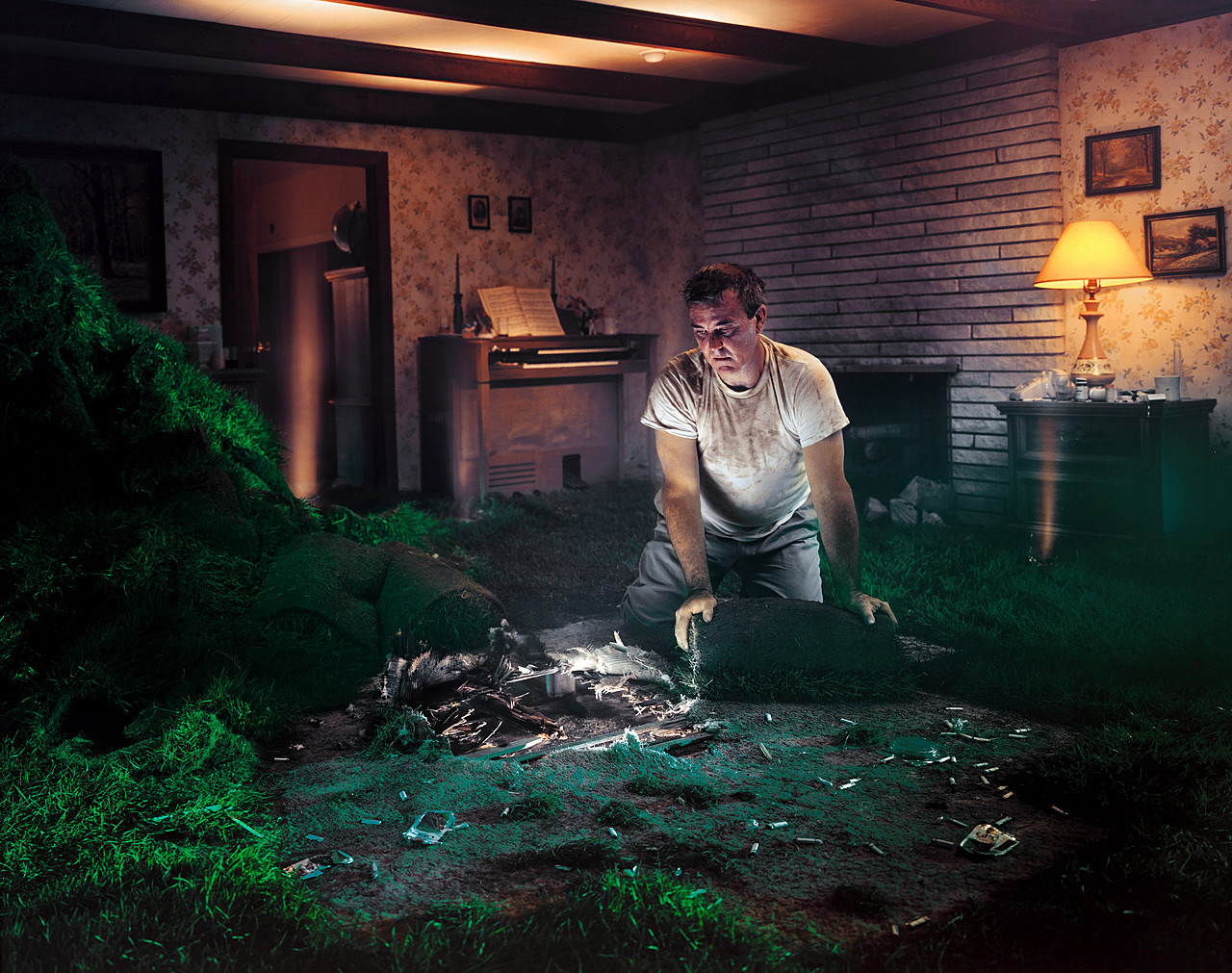1. My initial reaction to Crewdson's photos was admiration of the lighting and cinematic style of the way he shoots, but as I continued to look through more of his photos, a sense of unease grew. This is due to the eery, surreal energy his work gives off because of the staged, artificial moments he captured, yet at the same time manage to be reflective of the human psyche.
2. I would categorize Crewdson's work as cinematic photography, because it is all staged, but tries to be perceived as candid representations of human emotions, so it adds a hint of surrealism to it.
3. Helen Levitt is a candid photographer whose photos, at first glance, seem to be in stark contrast to Crewdson's. Hers mainly captured the everyday life of poor New Yorkers in the 30's and revealed the heart of people going about their day in a world without technology. Crewdson's, on the other hand, are captured through a cinematic, artificial, modern-day lens, and mostly depict the dark side of human emotions. There are some similarities between their respective works, in that they both strive to portray real, human emotions; it's just that how each approaches this objective is vastly different from the other. I prefer Levitt's work due to its general joy, lack of contemporary technology, and candid style.
Levitt: (my favorite photos of hers that I've seen so far)


4. If someone remade Crewdson's work now, I believe they would flip his theme of photographing humans interacting with nature that doesn't belong in a manmade setting, to humans interacting with technology overgrown in a natural setting. This would effectively reflect the massive, rapid growth of technology in our world today. I also believe his subjects would be more racially diverse, as everyone in the pictures I've seen appears to be white.

5. I find it interesting that Crewdson refers to his work as "commonplace", because it appears as very much unnatural. However, this is just due to the composition; the lighting and staging may be artificial, but the content of his work is not. It reflects very real emotions and thoughts (the "psychological nature"), so I suppose that is what he means when he calls his photos "commonplace".
Comments
Post a Comment